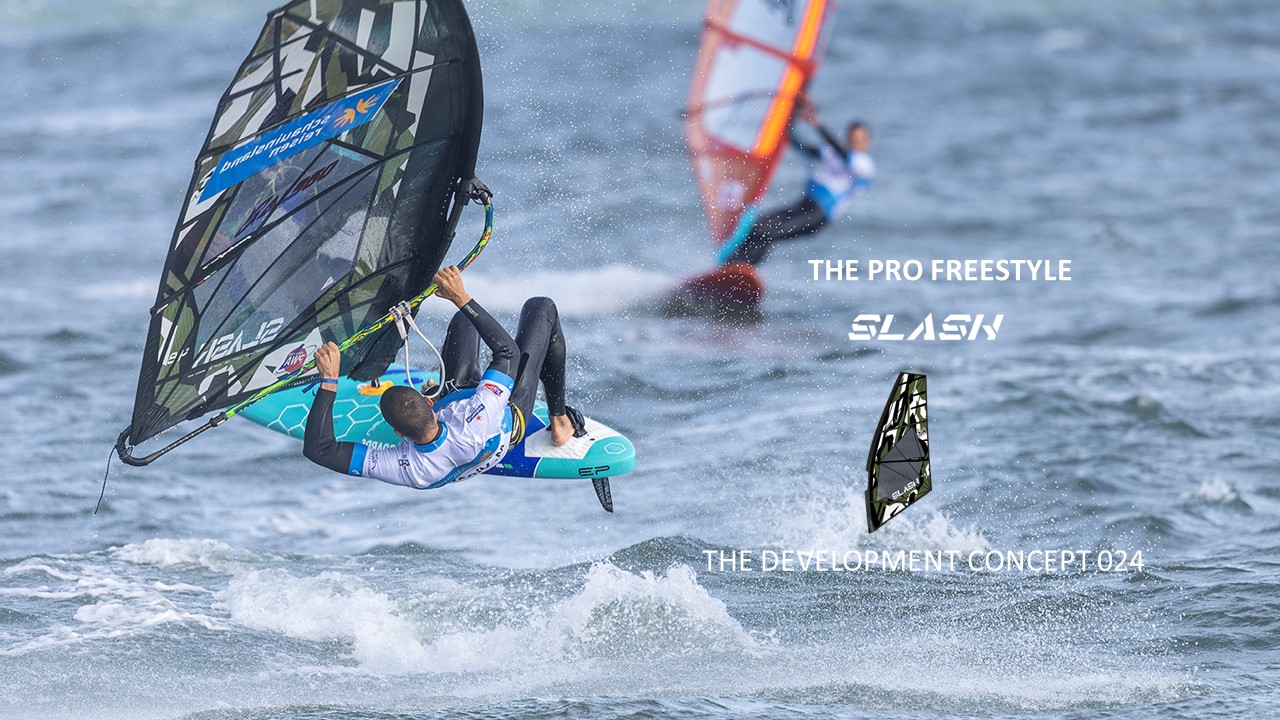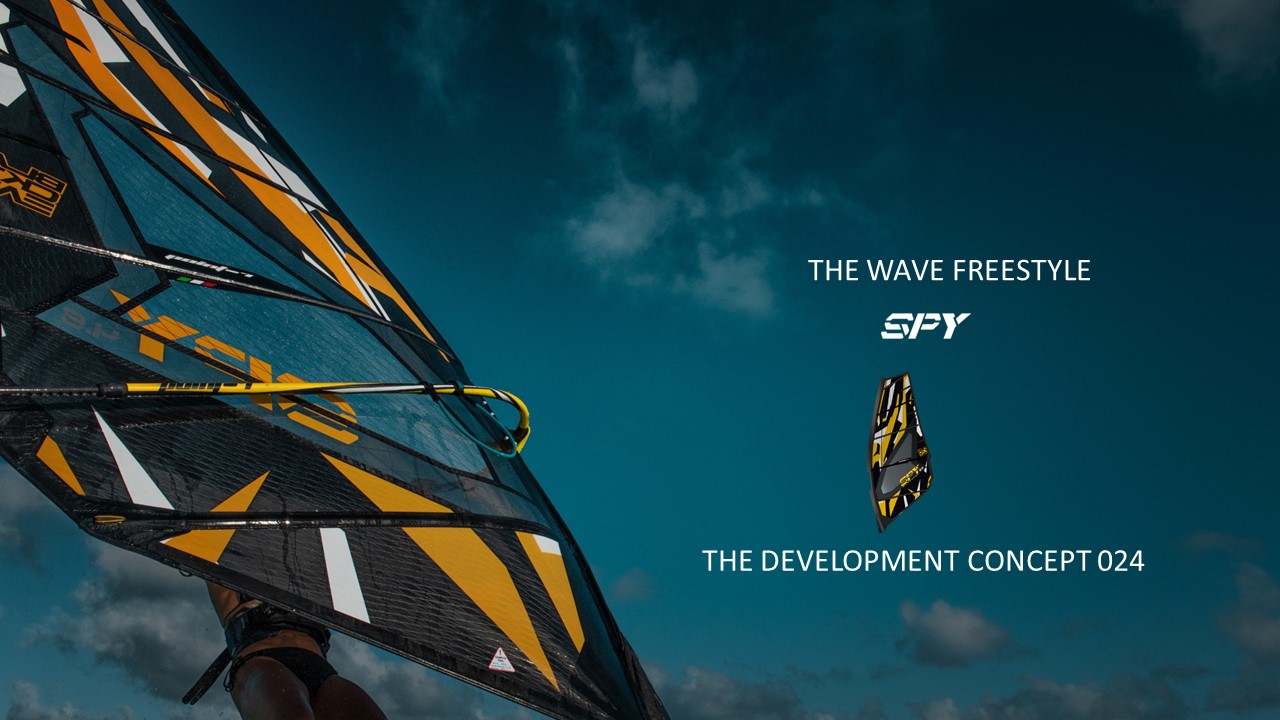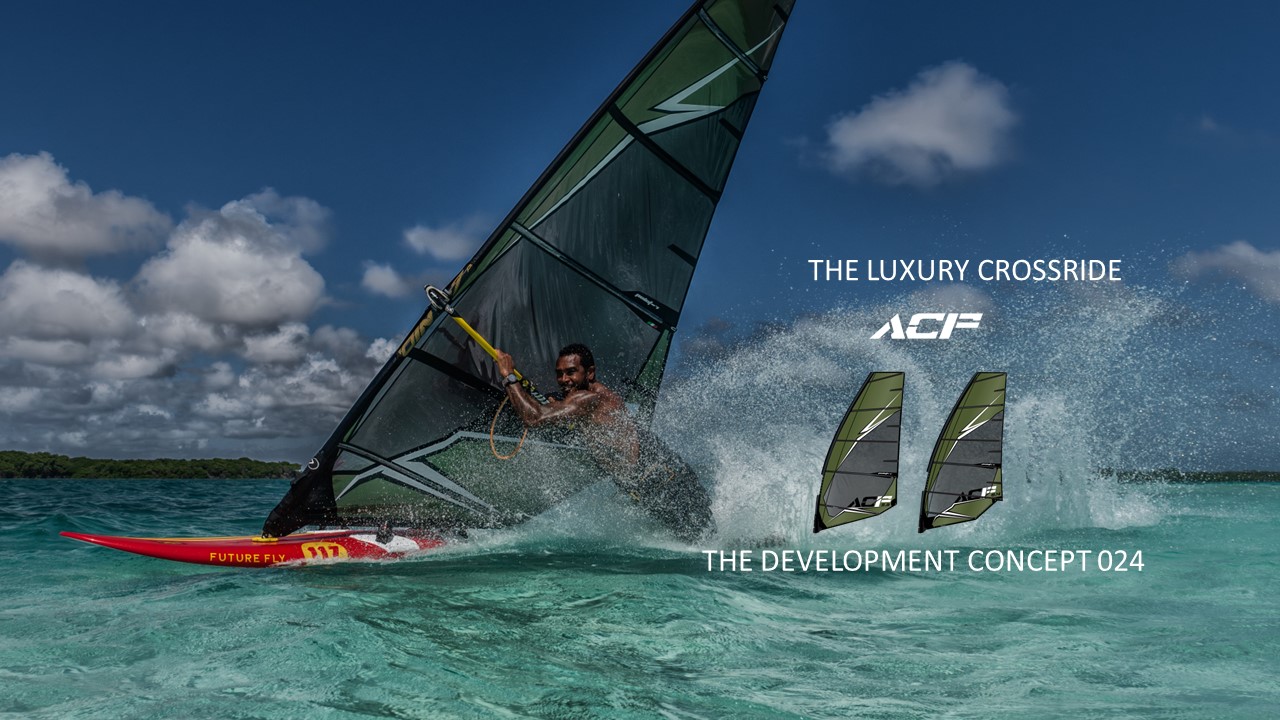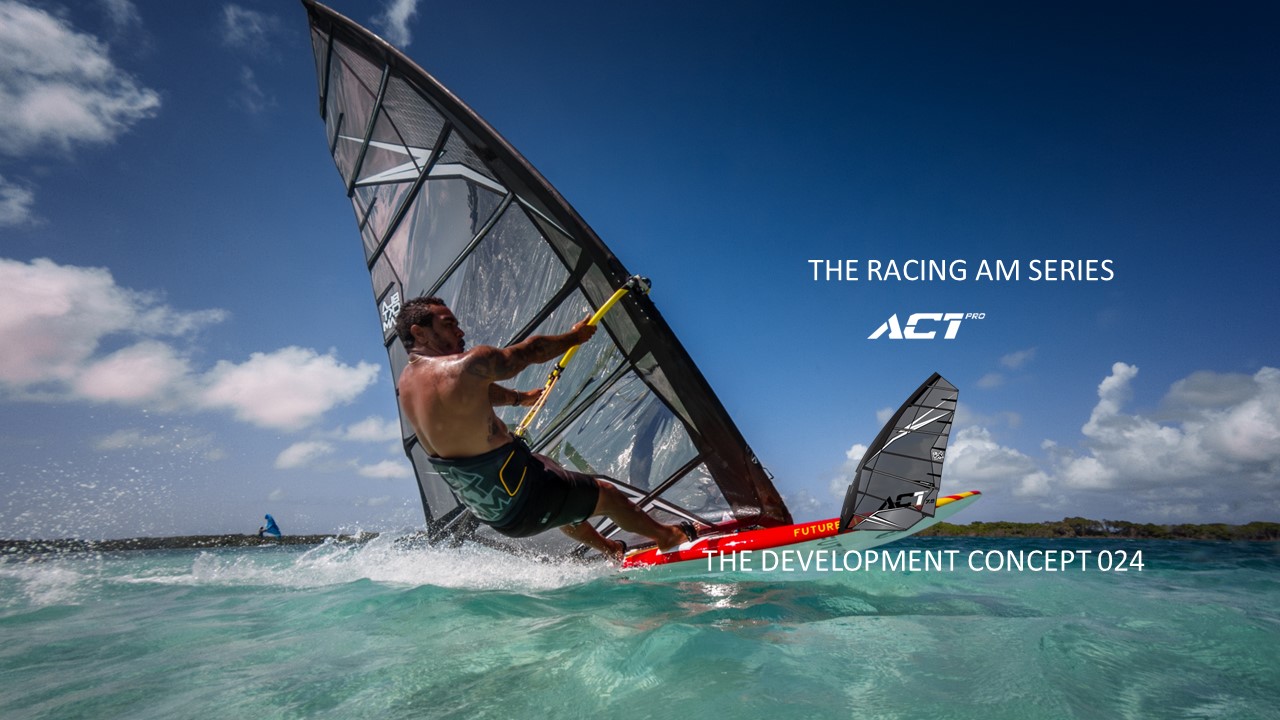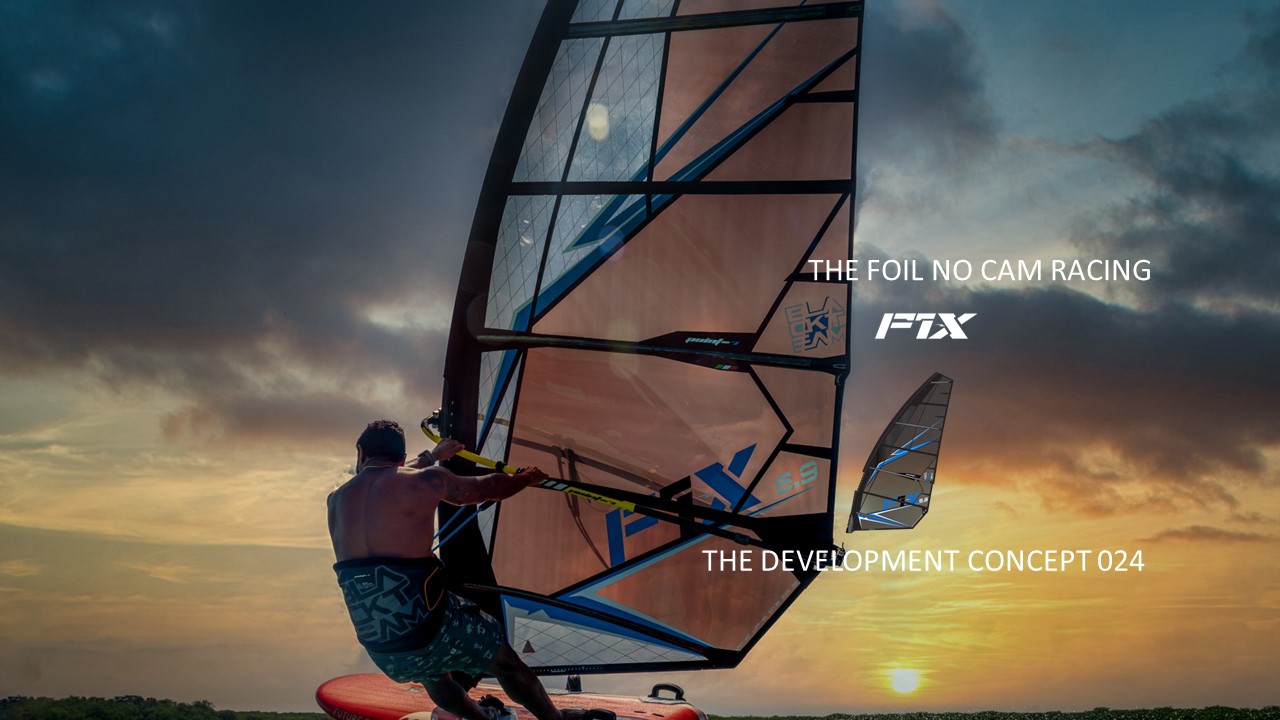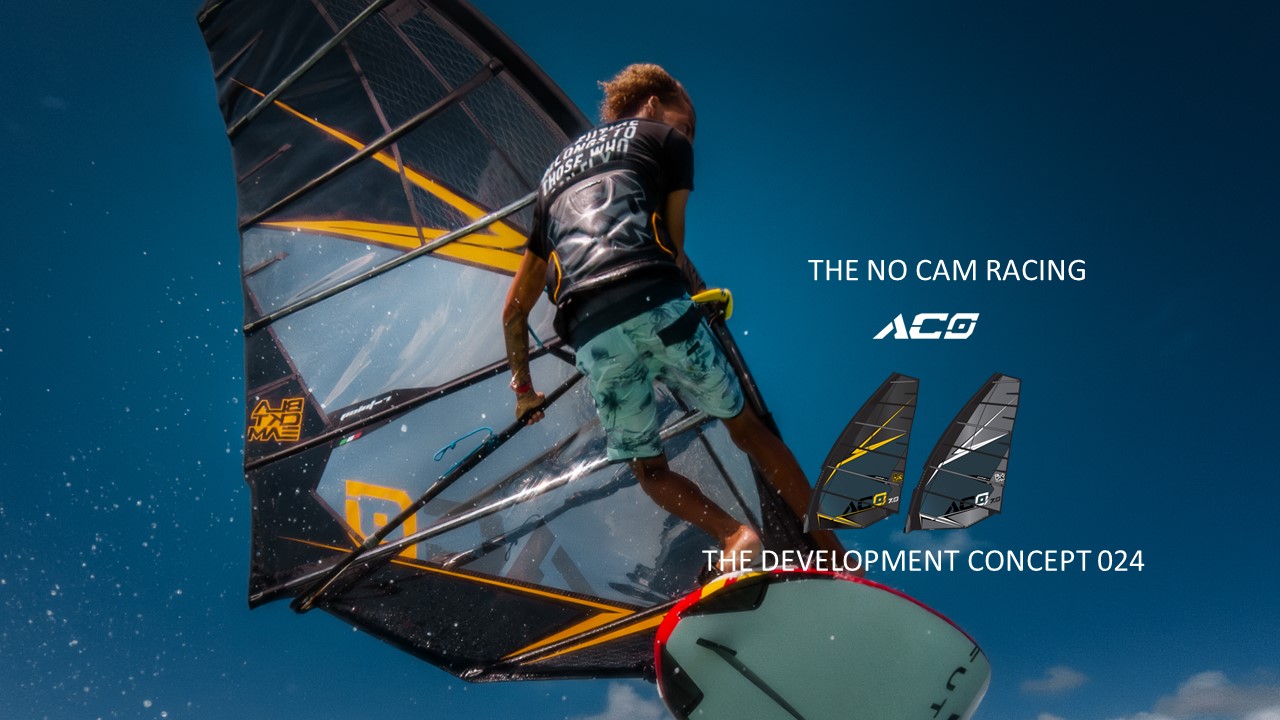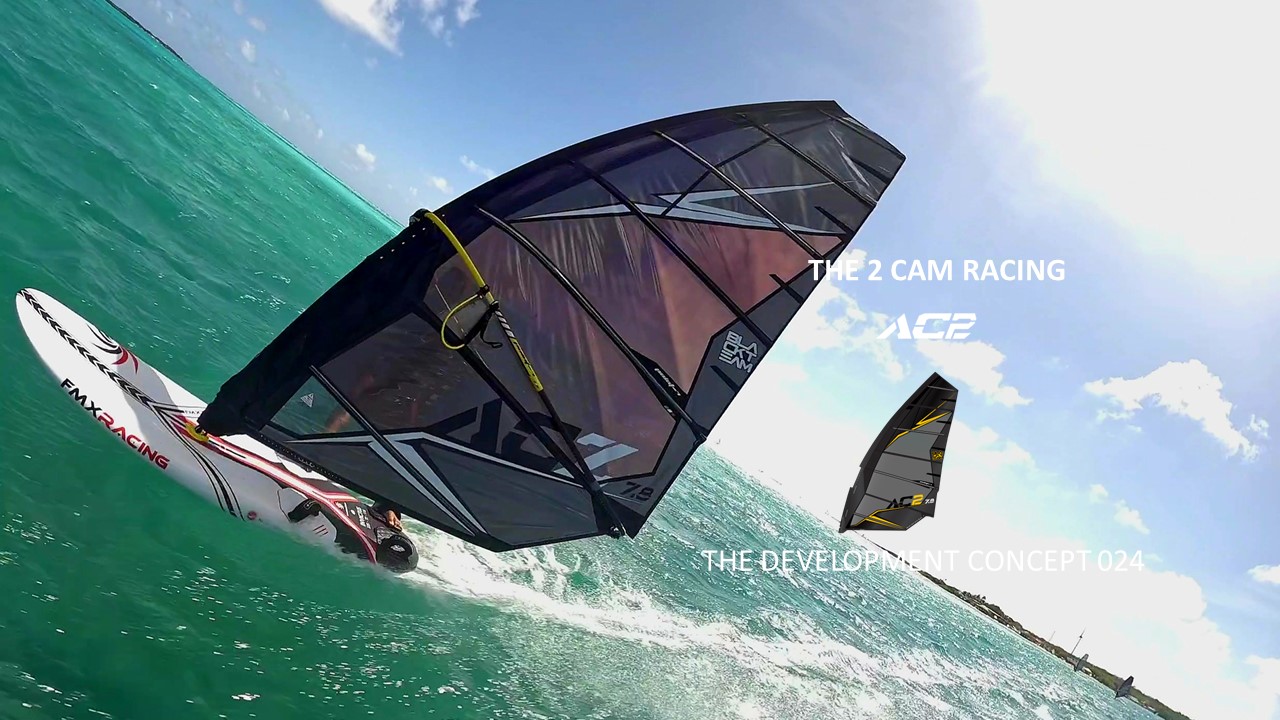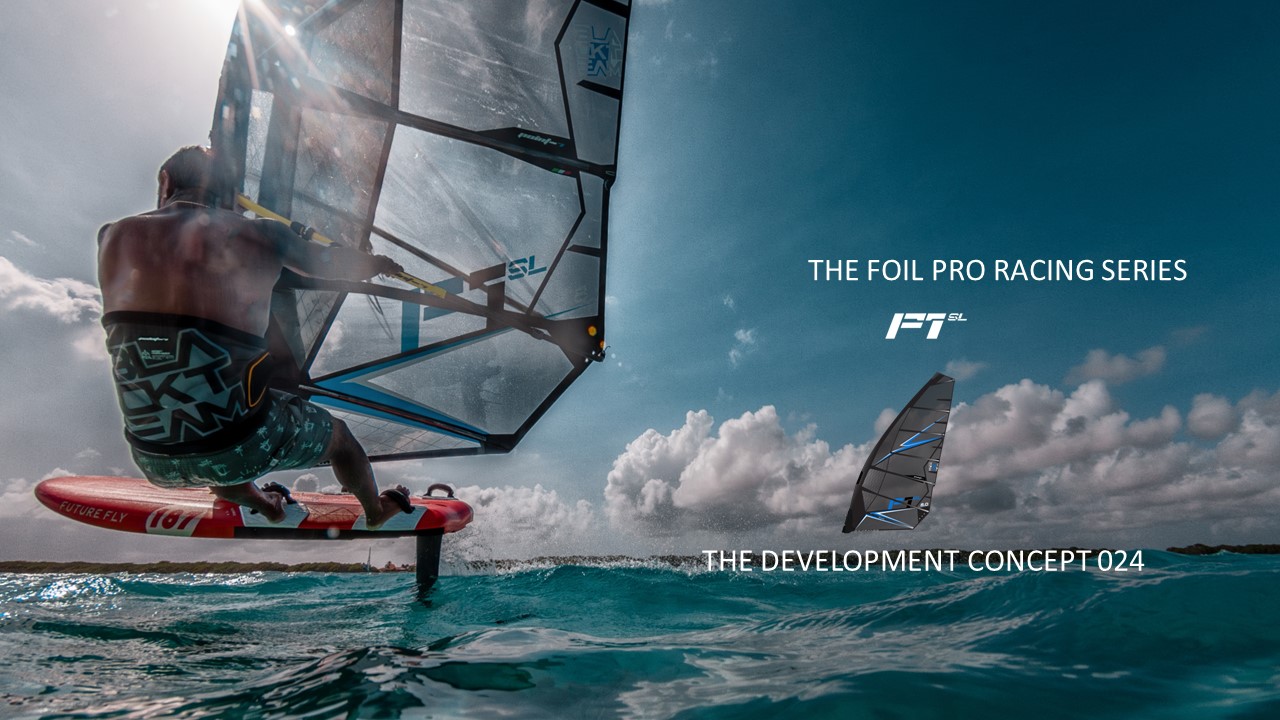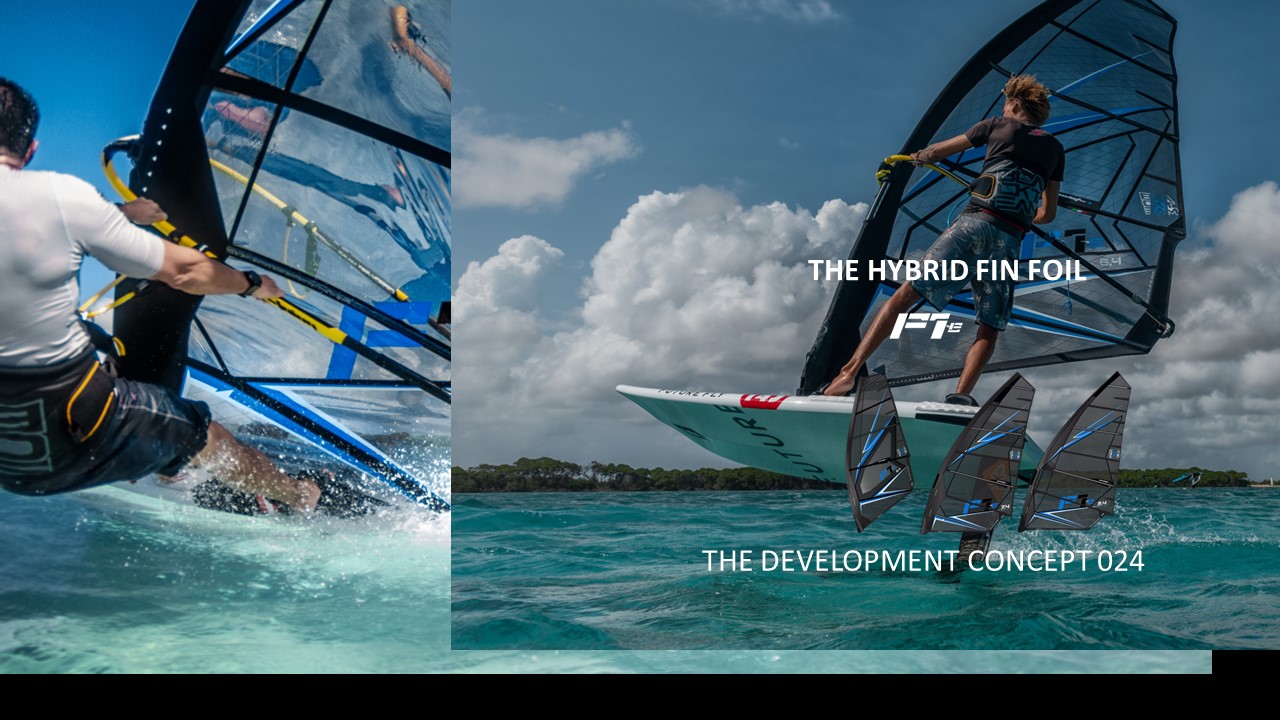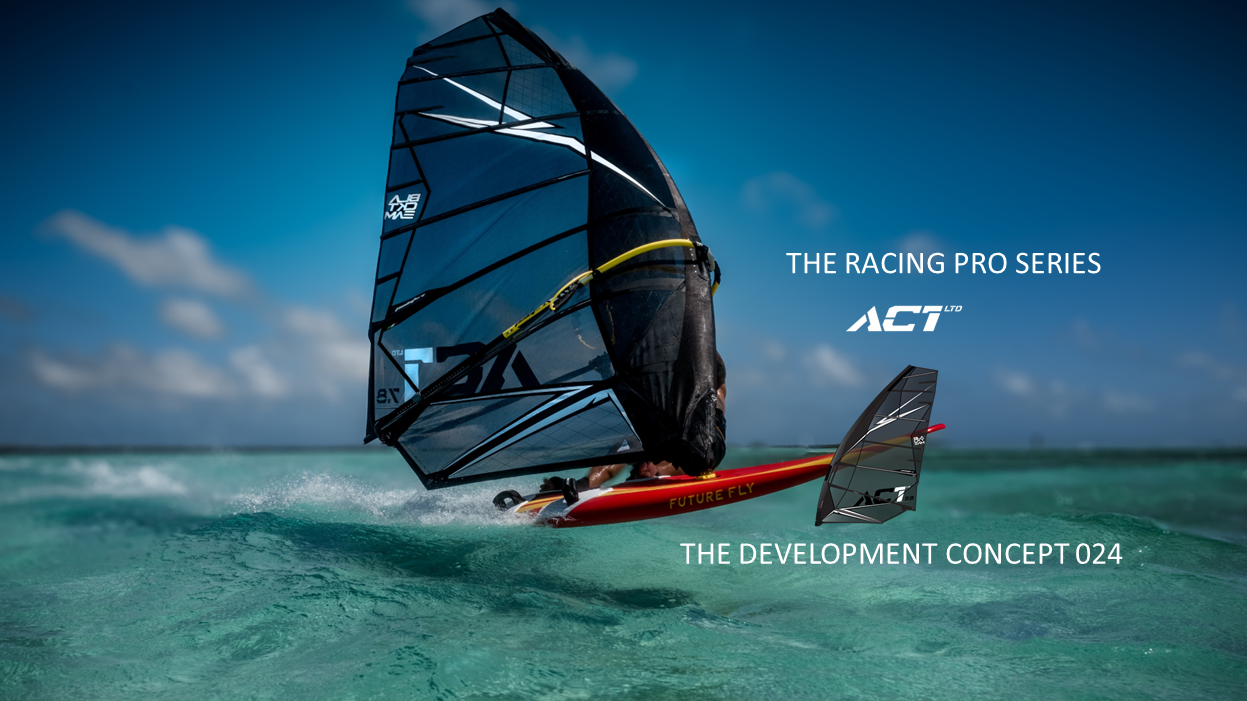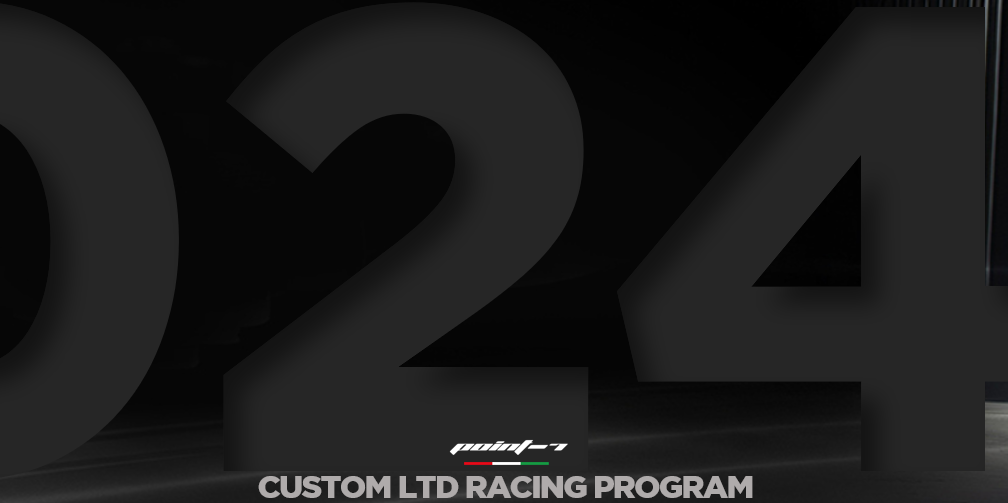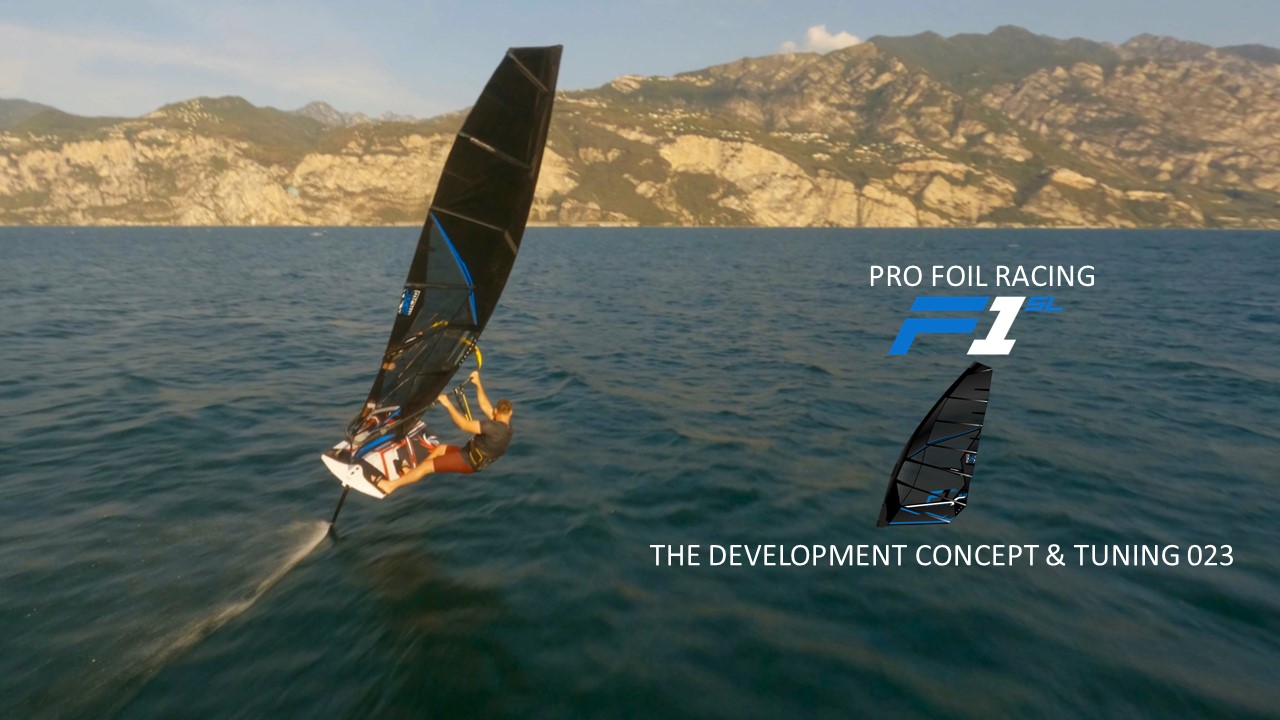SLASH Development 024
The Slash is a proper result from the continuous evolution of what happens in the 4-mark competition area from the PWA and EFPT.
Not because the freestylers are young and crazy, the development must be young and crazy! It’s wild! Wild in a sense of being crazy professional.
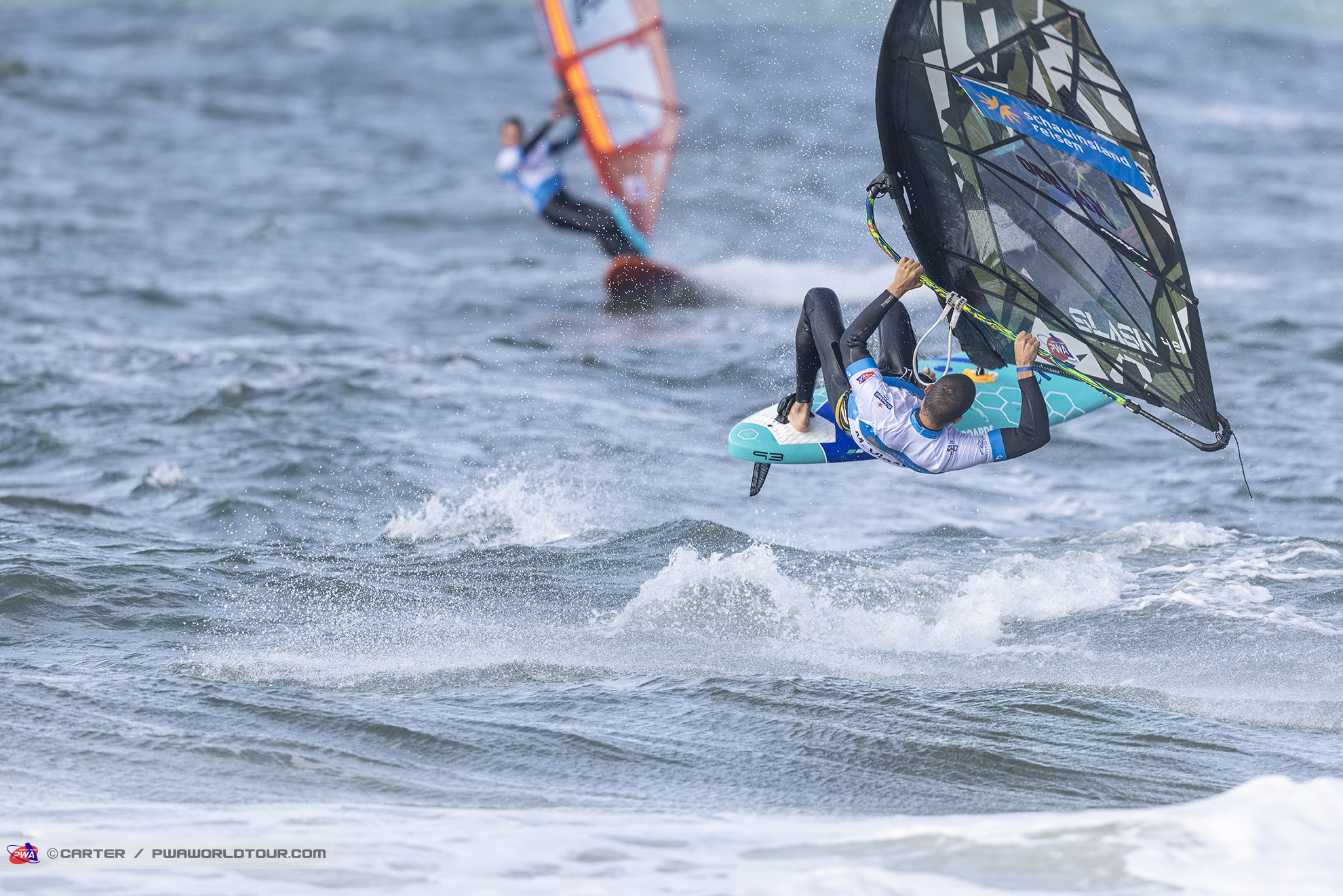
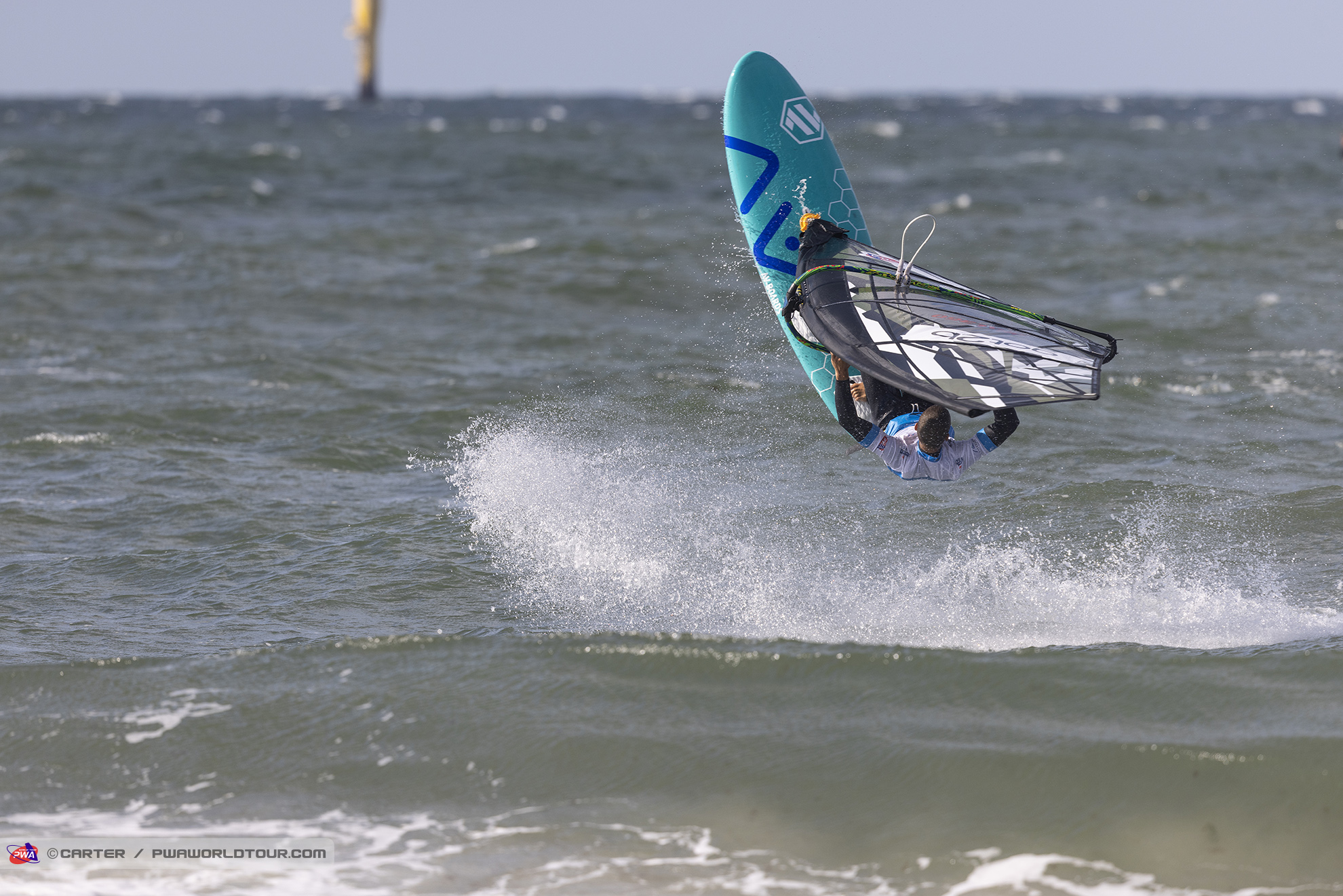
The freestyle discipline is very radical. The same PWA judges have decided to have heats with max 2 competitors on the water, and not 4 anymore: they are nowadays not able to judge more than one person at the time.
The speed, the perfection, and the different variants on each new move, it’s so technical and important, that they need to stay focus and watch careful, in order not to miss a detail which would cause them a lot of trouble with one of the competitors. Winning a heat, it’s getting close to 0,01 points sometimes, and each detail comes crucial. The same detail the freestyle sail must go through the development. We did lose a title for 0,01 point with Jacopo Testa and ended Vice World Champion. The Slash has though won already the PWA title and multiple times the EFPT title.
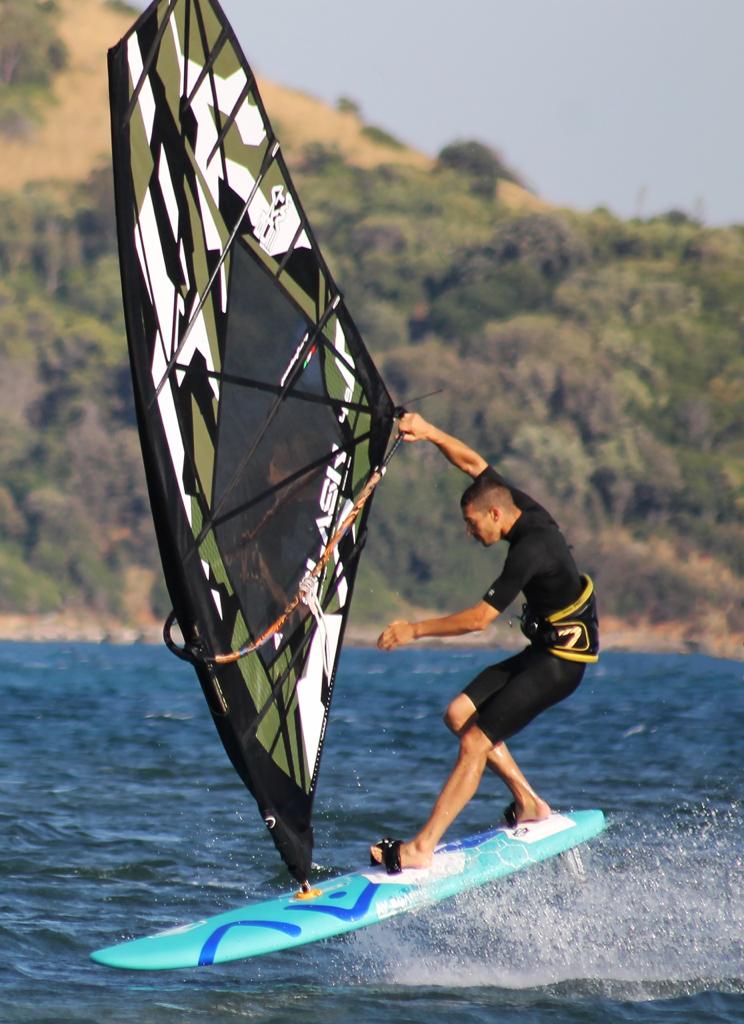
There is the same amount of detail and millimetric work on a freestyle sail as all other sails, but we could compare to the studying of the project as complicated as a full cambered race sail as the sail has to deliver specific characteristics to have the rider be able to be comfortable during rotations, switch stance, ducking the sail, plus all the pressure points, pop and stability during the different moves.
As an example, our testers turn up with videos and photos to show how the sail deforms, or moves, or showing how the profile reacts during the different moves. Explaining what would need to be changed or be different in those exact moments. They rig sails, the show you the difference between one proto and the other. They are almost fussier than a slalom rider. We love it and it’s one of the most interesting sails to develop.
The sail must follow their needs in that exact moment, to make them feel secure to be able to execute the move with the right timing and pressures.
We started the new project from the slash in 2014. This is the 10th evolution of changes and one of the most radical years for changes. Each size is always taken singularly as each size is being used in very different conditions and the needs are very different from strong wind to light wind, even if the characteristics of the sails are kept with the same concept. Power\Control\Stability\Pop\Acceleration\Reactivity\Firm. If you are looking for explosive power in light wind and big sails size, you are also looking for controllable power instead, in strong wind and smaller sizes.
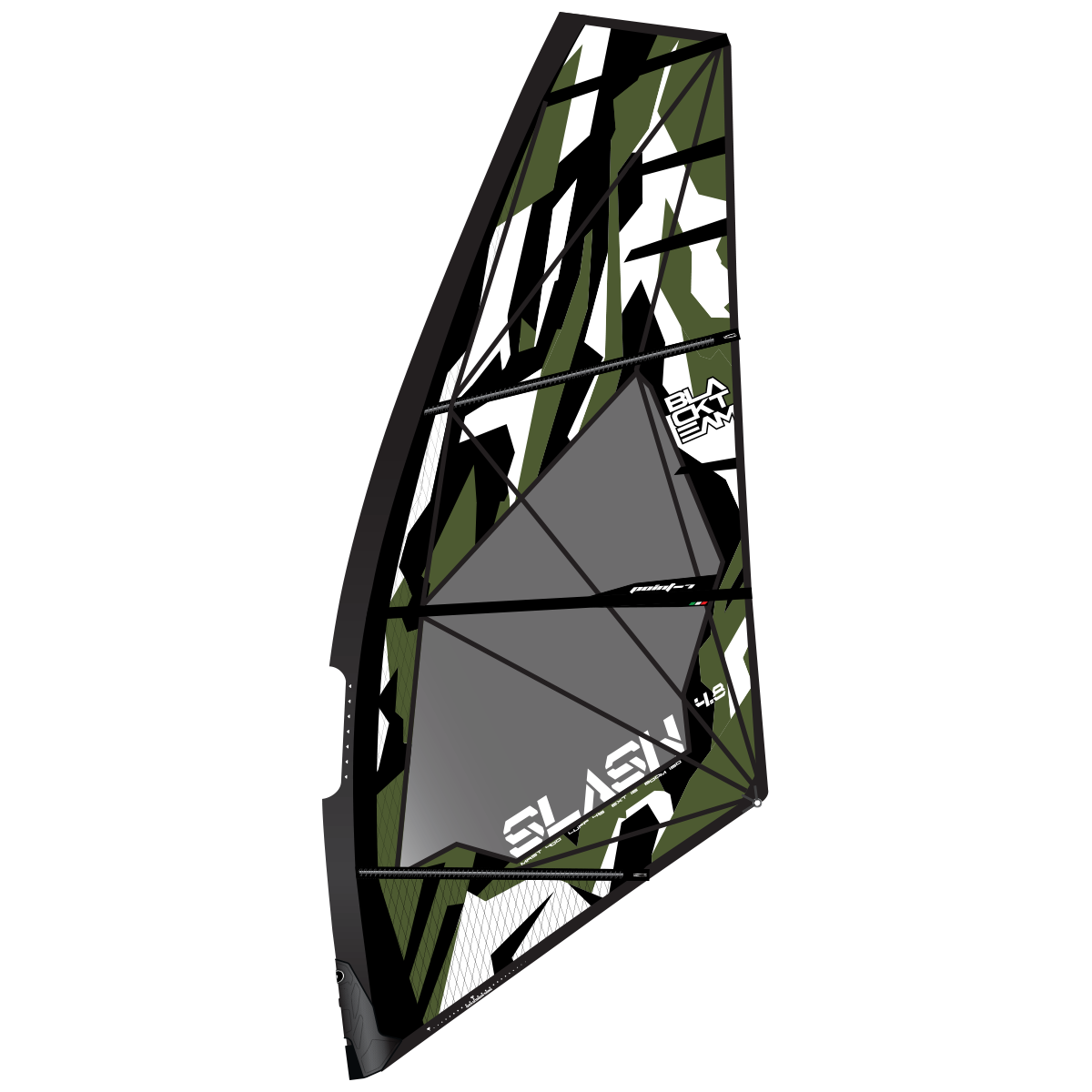
By checking the line forces and deformation of the sails during all the moves, we decided to apply Kevlar structural bands along the sail to reduce drastically the natural deformation to allow the sail to return to its initial form fast. This has the sail to increase it’s reactivity by close to double the speed and increase the speed on which moves can be executed, on top of moves becoming much easier.
A second X-ply panel next to the dacron used to give power\pop in aerial maneuvers and acceleration increased the power and stability of the sail big time. Imagine having the performance of almost a race camber sail to cruise towards the next move, plus an extreme further stability during arial time. Just another story to be written on the performance of the new Slash as the Xply takes over the performance control of the dacron panel. A winning combo of having mixed the two materials!
Let’s go for a new title!


